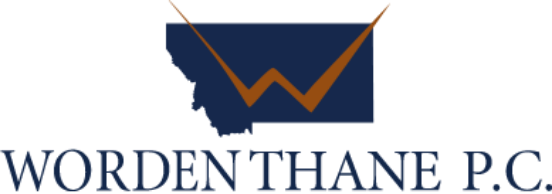For many assets in Montana, you can contract to have the asset pass directly to your spouse, children, charitable organization, or other designated beneficiary at your death, outside of probate. Designating beneficiaries is also commonly known as payable-on-death (POD) or transfer-on-death (TOD) designations or registrations.
A common beneficiary designation is naming POD beneficiaries on your life insurance policy. Legally, this is a contractual agreement between you and the life insurance company directing the life insurance company to pay, at your death, the death benefits of the policy directly to the beneficiaries you’ve designated in your policy agreement.
Also common is designating TOD beneficiaries on your retirement accounts (401K, IRA, etc). Again, this is a contractual agreement between you and the retirement plan administrator to transfer your retirement funds directly to the designated beneficiaries at your death.
You can also designate POD or TOD beneficiaries on your checking, savings, money market, and investment/brokerage accounts, as well as CDs and US Savings Bonds. Each financial institution (bank, brokerage company, life insurance company, retirement plan administrator) has their own form for making these designations on your accounts. However, your estate planning attorney can review the forms with you to ensure you’ve correctly designated your beneficiaries.
In Montana, you can also designate TOD beneficiaries for your real property and business interests, and you can add a beneficiary designation to your vehicle titles. To designate a beneficiary for your real property, you complete and record a transfer on death deed, and for your business interests, you would execute a transfer on death registration. The Montana Motor Vehicle Division has a form you would complete to add beneficiaries to your vehicle titles.
In most cases, you can designate one or more beneficiaries to receive the benefit equally or unequally, and you can name contingent beneficiaries in the event your originally designated beneficiaries die before you – for example, your spouse can be your primary beneficiary, and your three children, equally, can be the contingent beneficiary. Additionally, if your estate plan includes a trust, you can name the trust as a beneficiary of your accounts or property.
To claim the assets at your death, your beneficiaries will have to contact each institution and provide your death certificate, and many institutions will also require the beneficiaries complete a claim form.
Using beneficiary designations is often an efficient way to pass your estate to your loved ones. However, it is important to note that even though these transfers occur outside of probate, they are still potentially subject to claims by your creditors at your death. And, if all your assets pass to beneficiaries outside of probate, your beneficiaries will have to work out among themselves how to pay your final expenses, such as your funeral or cremation/burial, as you won’t have an “estate” to pay those expenses – this is often where including a revocable trust in your estate plan could be helpful.
Finally, remember, transfers of assets to beneficiaries by POD, TOD, or other beneficiary designations are not governed by your Will or Trust – the assets will pass directly to the designated beneficiary regardless of what your Will or Trust says, so you’ll want to make sure that you’ve set up your beneficiary designations in a manner that is consistent with your overall estate planning goals. And special consideration should be given before designating a minor child or disabled individual as beneficiary.
Visit with an estate planning attorney to figure out how to incorporate the use of beneficiary designations in your estate planning.
